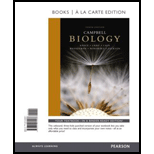
To determine: The number of electrons in a fluorine atom.
Concept introduction: The atomic number of an element is the number of protons in the nucleus of its atoms. In a neutral atom, the number of protons and electrons is equal. Thus, the number of electrons present in a neutral atom is equal to its atomic number.
To determine: The number of shells in a fluorine atom.
Concept introduction: The electrons in an atom present around the nucleus are in constant motion. An electronic shell represents the energy levels and the average distance at which electrons orbit around the nucleus. Simplified diagrams of atoms show the electrons arranged in electronic shells as concentric rings around the nucleus. In an atom, the first shell can contain only two electrons, whereas the second shell can have a total of 8 electrons.
To list: The names of orbitals occupied by electrons in a fluorine atom.
Concept introduction: Electronic shells can be subdivided into electronic orbitals. Each electronic orbital represents the three-dimensional volume around the nucleus where an electron is most likely to occur while orbiting around the nucleus. Each orbital can have two electrons. Thus, the number of electrons present in each shell depends on the number of orbitals in each shell. In an atom, the first shell has one orbital called 1s, thus it can contain only two electrons. The second shell has one spherical orbital called 2s, and three dumbbell shaped orbitals named 2p orbitals (Fig. 2). Thus, the second shell can have a total of 8 electrons.
To determine: The number of electrons needed to completely fill the valence shell of a fluorine atom.
Concept introduction: The outermost shell of an atom is called the valence shell, and the electrons present in it are called valence electrons.
Want to see the full answer?
Check out a sample textbook solution
Chapter 2 Solutions
Campbell Biology, Books a la Carte Plus Mastering Biology with eText -- Access Card Package (10th Edition)
- series of two-point crosses were carried out among six loci (a, b, c, d, e and f), producing the following recombination frequencies. According to the data below, the genes can be placed into how many different linkage groups? Loci a and b Percent Recombination 50 a and c 14 a and d 10 a and e 50 a and f 50 b and c 50 b and d 50 b and e 35 b and f 20 c and d 5 c and e 50 c and f 50 d and e 50 d and f 50 18 e and f Selected Answer: n6 Draw genetic maps for the linkage groups for the data in question #5. Please use the format given below to indicate the genetic distances. Z e.g. Linkage group 1=P____5 mu__Q____12 mu R 38 mu 5 Linkage group 2-X_____3 mu__Y_4 mu sanightarrow_forwardWhat settings would being able to isolate individual bacteria colonies from a mixed bacterial culture be useful?arrow_forwardCan I get a handwritten answer please. I'm having a hard time understanding this process. Thanksarrow_forward
- Biology How many grams of sucrose would you add to 100mL of water to make a 100 mL of 5% (w/v) sucrosesolution?arrow_forwardWhich marker does this DNA 5ʹ AATTGGCAATTGGCAATTGGCAATTGGCAATTGGCAATTGGCAATTGGC 3ʹ show?arrow_forwardThe Z value of LOD for two genes is 4, what does it mean for linkage and inheritance?arrow_forward
- Biology How will you make a 50-ul reaction mixture with 2uM primer DNA using 10 uM primer DNA stocksolution and water?arrow_forwardBiology You’re going to make 1% (w/v) agarose gel in 0.5XTBE buffer 100 ml. How much agarose are you goingto add to 100 ml of buffer? The volume of agaroseis negligible.arrow_forwardBiology How will you make a 50-ul reaction mixture with0.2 mM dNTP using 2-mM dNTP stock solution andwater?arrow_forward
 Principles Of Radiographic Imaging: An Art And A ...Health & NutritionISBN:9781337711067Author:Richard R. Carlton, Arlene M. Adler, Vesna BalacPublisher:Cengage Learning
Principles Of Radiographic Imaging: An Art And A ...Health & NutritionISBN:9781337711067Author:Richard R. Carlton, Arlene M. Adler, Vesna BalacPublisher:Cengage Learning Anatomy & PhysiologyBiologyISBN:9781938168130Author:Kelly A. Young, James A. Wise, Peter DeSaix, Dean H. Kruse, Brandon Poe, Eddie Johnson, Jody E. Johnson, Oksana Korol, J. Gordon Betts, Mark WomblePublisher:OpenStax College
Anatomy & PhysiologyBiologyISBN:9781938168130Author:Kelly A. Young, James A. Wise, Peter DeSaix, Dean H. Kruse, Brandon Poe, Eddie Johnson, Jody E. Johnson, Oksana Korol, J. Gordon Betts, Mark WomblePublisher:OpenStax College Biology 2eBiologyISBN:9781947172517Author:Matthew Douglas, Jung Choi, Mary Ann ClarkPublisher:OpenStax
Biology 2eBiologyISBN:9781947172517Author:Matthew Douglas, Jung Choi, Mary Ann ClarkPublisher:OpenStax Biology: The Unity and Diversity of Life (MindTap...BiologyISBN:9781337408332Author:Cecie Starr, Ralph Taggart, Christine Evers, Lisa StarrPublisher:Cengage Learning
Biology: The Unity and Diversity of Life (MindTap...BiologyISBN:9781337408332Author:Cecie Starr, Ralph Taggart, Christine Evers, Lisa StarrPublisher:Cengage Learning Biology Today and Tomorrow without Physiology (Mi...BiologyISBN:9781305117396Author:Cecie Starr, Christine Evers, Lisa StarrPublisher:Cengage Learning
Biology Today and Tomorrow without Physiology (Mi...BiologyISBN:9781305117396Author:Cecie Starr, Christine Evers, Lisa StarrPublisher:Cengage Learning Biology (MindTap Course List)BiologyISBN:9781337392938Author:Eldra Solomon, Charles Martin, Diana W. Martin, Linda R. BergPublisher:Cengage Learning
Biology (MindTap Course List)BiologyISBN:9781337392938Author:Eldra Solomon, Charles Martin, Diana W. Martin, Linda R. BergPublisher:Cengage Learning





